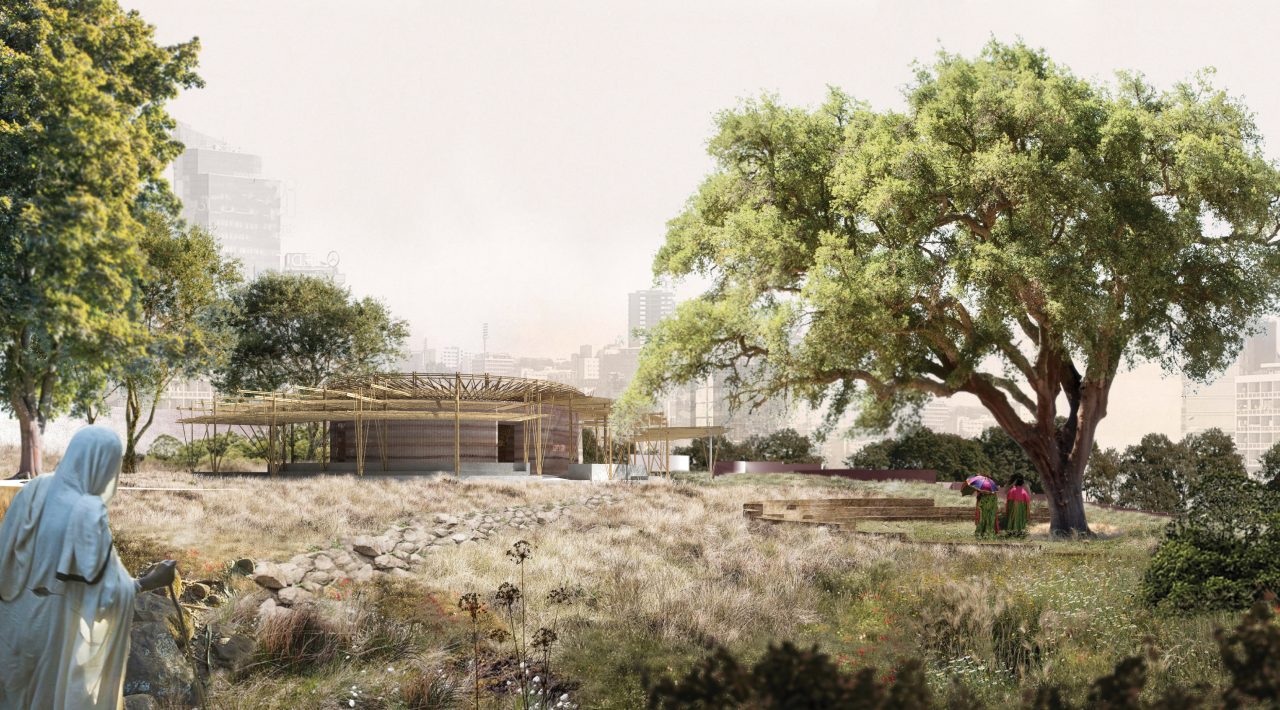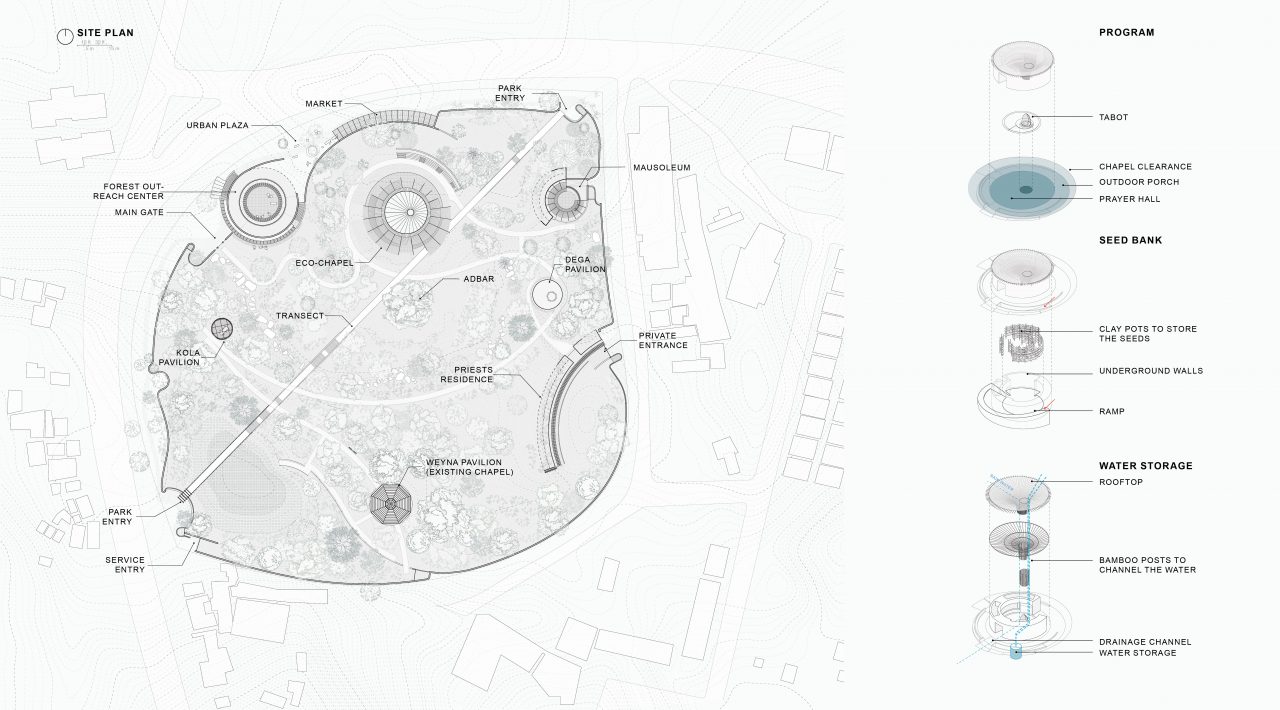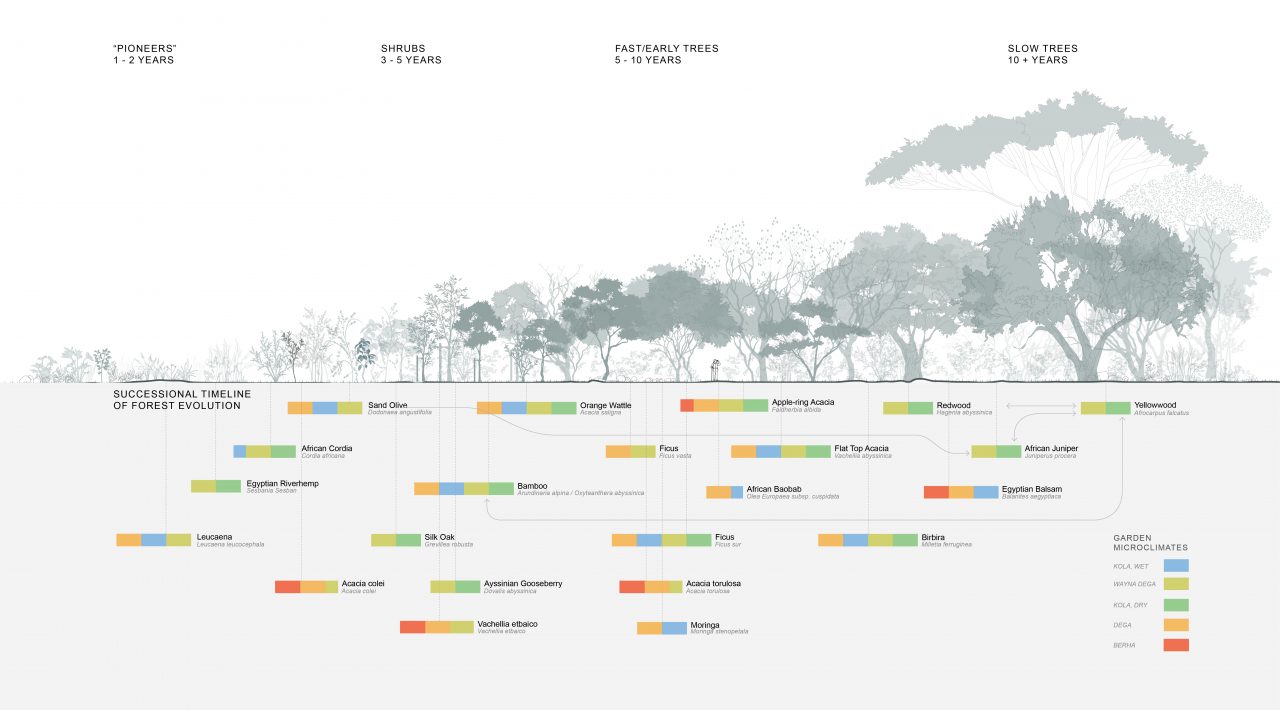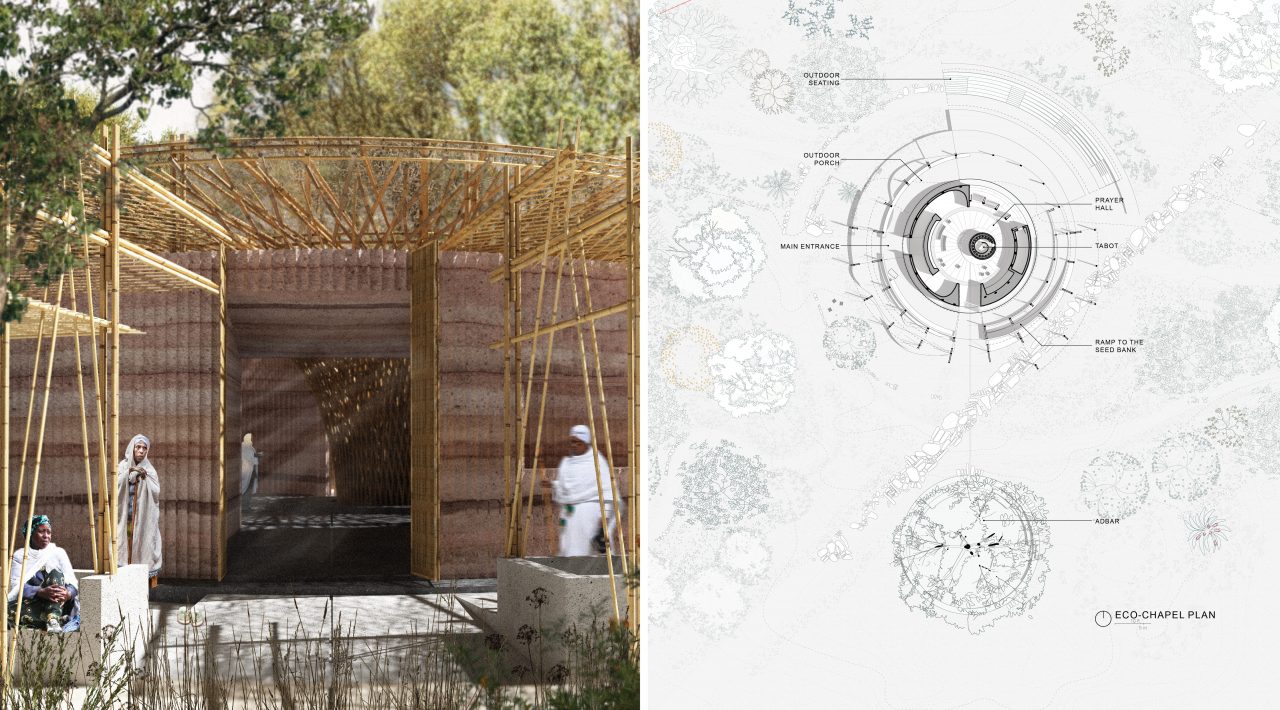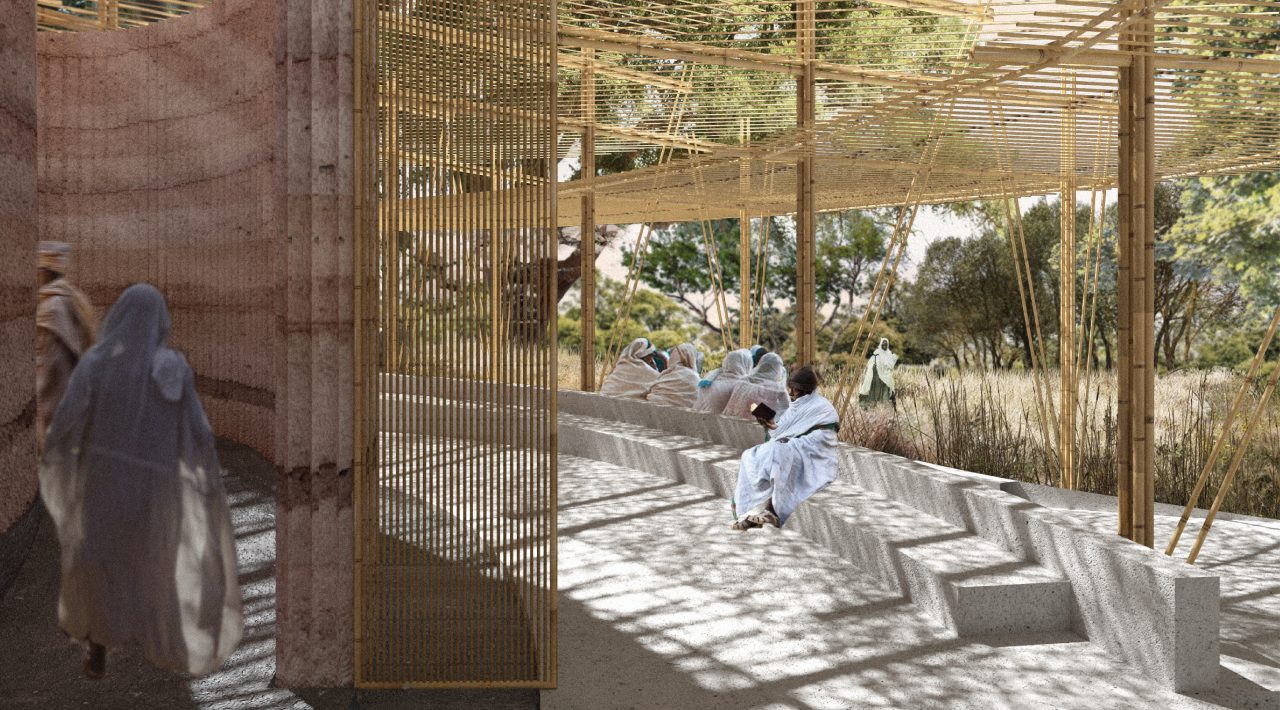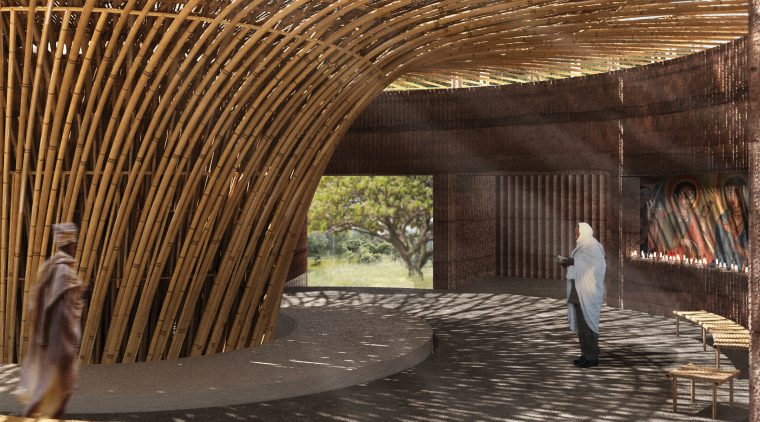Ethiopia is among the most climate-vulnerable countries due to the high rainfall variability and extreme climate events such as flooding and droughts, which create food insecurity. The site is modeled on the country’s agro-ecological regions – five distinct zones based on rainfall, temperature, and altitude. Farming and forestry in Ethiopia have often been at odds, with agricultural productivity conflicting with forest resilience. In order to increase Ethiopia’s climate resilience, these two land uses must be coordinated through holistic sustainability practices.
The Eco-Chapel project intertwines environmental and religious functions to create a public Forestry Outreach Center and sacred space set within an urban botanical garden, a microcosm of Ethiopia’s diverse ecology. In order to maintain the rituals of Ethiopian religion, the design is based on the form of a traditional chapel with a central secluded space (reserved for the tabot) surrounded by worship space. In addition to the chapel and community center, the site includes a market for the selling of forest garden harvests, a mausoleum for religious burial, resident housing for the accommodation of clergy, monks, and nuns, and several mahabir houses for use by church congregants.
The Eco-Chapel uses bamboo, a rapidly renewable resource with a high strength-to-weight ratio, as an alternative to steel in the building’s roof structure and pergola. Bamboo is carbon sequestering and has a positive impact on global emissions due to its negative carbon footprint. Rammed earth, also locally-available, serves as a building material for the chapel’s walls. The thermal mass of the earthen walls passively moderate the interior of the chapel, eliminating the need for mechanical heating or cooling to maintain thermal comfort despite Addis Ababa’s 20-30 degree temperature swings from day to night.
All buildings on the site besides the Eco-Chapel are earth-sheltered (built into the hillside) and have green roofs. These features allow for passive heating and cooling while integrating the buildings into the landscape. The Eco-Chapel shelters an underground seed bank for the conservation of Ethiopia’s biodiversity and collects rainwater for the adjacent Adbar Tree. A primary pedestrian pathway acts as a transect, forming a cross-section through each forest planting zone as an educational tool.
